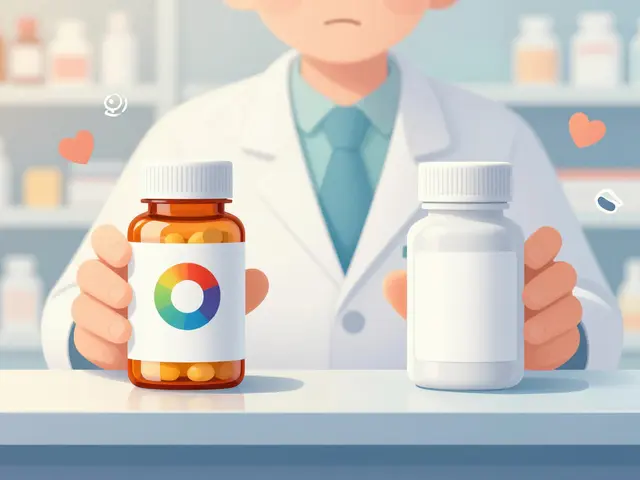Introduction to Amantadine and its Uses in Pediatrics
Amantadine is a medication that has been in use for many years, primarily for the treatment of influenza A and as an antiviral agent. However, it has also been found to have potential benefits in the treatment of various neurological conditions, particularly in pediatric patients. In this article, I will be reviewing the safety and efficacy of Amantadine in pediatric patients, discussing the various conditions it can be used to treat, and exploring the potential side effects and concerns that may arise with its use.
The Role of Amantadine in Treating Influenza A
In pediatric patients, Amantadine has long been used as a treatment for influenza A, helping to reduce the severity and duration of symptoms. This is particularly important in young children, who can be more susceptible to complications from the virus. Research has shown that Amantadine is effective in preventing the virus from replicating, thereby reducing the severity of symptoms and the risk of complications. However, it is crucial to note that Amantadine is not effective against all strains of influenza A, and its use should be guided by the advice of a healthcare professional.
Amantadine as a Treatment for Parkinson's Disease in Children
While Parkinson's disease is typically associated with older adults, it can also affect children, albeit rarely. In these cases, Amantadine has been found to be a useful treatment option in alleviating some of the motor symptoms associated with the condition. Studies have shown that the medication can help improve muscle control, balance, and coordination in pediatric patients, leading to better outcomes and improved quality of life. However, more research is needed to fully understand the long-term effects of Amantadine use in children with Parkinson's disease.
Amantadine for the Treatment of Attention Deficit Hyperactivity Disorder (ADHD)
Amantadine has also been studied for its potential benefits in treating attention deficit hyperactivity disorder (ADHD) in pediatric patients. Some studies have suggested that the medication may be effective in reducing hyperactivity, impulsivity, and inattention in children with ADHD. However, it is important to note that these studies have been limited and further research is needed to determine the true efficacy and safety of Amantadine in treating ADHD in children.
Traumatic Brain Injury and the Use of Amantadine in Pediatric Patients
Another potential use of Amantadine in pediatric patients is in the treatment of traumatic brain injury (TBI), particularly in cases of moderate to severe injury. Research has indicated that the medication may help improve cognitive function, attention, and processing speed in children recovering from TBI. While more research is needed to confirm these findings, the potential benefits of Amantadine in this context are promising and warrant further exploration.
Amantadine for the Management of Autistic Behaviors
Studies have also been conducted to explore the potential benefits of Amantadine in managing certain behaviors associated with autism spectrum disorder (ASD) in pediatric patients. Some research has suggested that the medication may help reduce irritability, hyperactivity, and repetitive behaviors in children with ASD. However, as with other potential uses of Amantadine, further research is needed to fully understand the safety and efficacy of the medication in this context.
Dosage and Administration of Amantadine in Pediatric Patients
When it comes to administering Amantadine in pediatric patients, it is essential to follow the guidance of a healthcare professional, as the appropriate dosage will depend on factors such as the child's age, weight, and the specific condition being treated. In general, lower doses are recommended for younger children, and the medication is typically administered in either liquid or capsule form. It is important to monitor the child closely for any potential side effects or adverse reactions while taking Amantadine.
Potential Side Effects and Concerns with Amantadine Use in Children
As with any medication, there are potential side effects and concerns associated with the use of Amantadine in pediatric patients. Some possible side effects include dizziness, insomnia, nausea, and loss of appetite. In some cases, more serious side effects, such as hallucinations or seizures, may occur. It is vital to discuss the potential risks and benefits of Amantadine treatment with a healthcare professional and to monitor the child closely for any signs of adverse reactions.
Conclusion: Weighing the Benefits and Risks of Amantadine in Pediatric Patients
In conclusion, Amantadine has shown promise as a treatment for various neurological conditions in pediatric patients, ranging from influenza A to traumatic brain injury. However, as with any medication, it is crucial to weigh the potential benefits against the risks and to closely follow the guidance of a healthcare professional when using Amantadine in children. Further research is needed to fully understand the long-term safety and efficacy of this medication in pediatric patients, but the potential benefits are certainly worth exploring further.




Andrew Wilson on 28 April 2023, AT 00:13 AM
Look, we can't just throw Amantadine at any kid because it sounds cool. This drug has a history of side effects that can mess with a child's developing brain. Parents need to demand a thorough risk assessment before signing any prescription. It's not a miracle pill for every neurological quirk, and we must hold doctors accountable for proper dosing. The moral responsibility to protect children from unnecessary pharmacological exposure is non‑negotiable. If a physician suggests it without solid evidence, that's a red flag. I keep telling people to read the fine print and ask about long‑term outcomes. Kids deserve safe treatment, not a gamble on unproven benefits. Dont let pharmaceutical hype dictate your child's health choices.